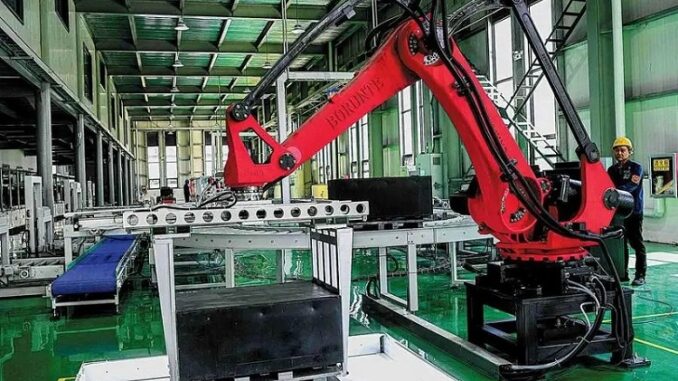
Used EV batteries – opportunities for China’s recycling industry
Scientists have predicted that end-of-life (EOL) batteries from EVs could account for 86% of energy storage for wind and 36% for solar PV in 2040.
China’s recycling industry is enjoying a wealth of new opportunities driven by the growing number of used auto batteries in the country that are no longer viable for their original purpose of powering a vehicle, according to China Global Television Network (CGTN).
China maintained its position as the global leader in electric vehicle production and sales for the ninth consecutive year in the previous year. Consequently, the expanding industry has resulted in a significant surge of retired automotive batteries.
So far, the focus is shifting towards finding sustainable solutions for managing and re-purposing these used batteries.
Since China’s Baoqing Energy Storage Station’s recycling system began operating in 2021, the cumulative power generation has reached over 1.7 million kilowatt-hours, equivalent to the daily electricity consumption of nearly 300,000 people.
It’s expected that by 2025, China will have retired a total of about 780,000 tons of auto batteries. Re-using them for power generation storage is just one option.
Retired batteries retain over 60% of their original capacity and can be employed in less demanding electric vehicles or stationary energy storage systems. As a result, the management of end-of-life electric vehicles has received increased attention globally over the last decade due to their environmental and economic benefits.
This month, the European Union implemented a new regulation requiring 70 percent of all batteries to be recycled by the end of 2030. This increase demands on China’s battery makers and recyclers as the EU is a major importer of lithium batteries from China.

The recycling and secondary utilisation of retired vehicle batteries have become the hot spot in China’s NEV industry development.
Industry source Electrive Today explains that in China, second life use is translated as “cadence”, “gradient”, or “ladder” use, which also refers to the Chinese policy of “most urgent use first.” Electric vehicle batteries have a use-life of 4-6 years after which they operate below 70-80% capacity, which means they can generally get another 2-4 years of use in second life applications before being recycled to recover
valuable resources.
The second life ‘ladder’ in China primarily involves uses such as in slower light electric vehicles followed by numerous stationary energy storage applications. Although the term ‘second life’ is well known outside of China, no other countries have so far utilised this ‘ladder’ prioritisation scale. Of course, commercial tools and pilot projects for second-life usage exist outside of China, but other countries have yet to experience the kind of scale of batteries hitting the reuse and recycling markets.
Sources:
- Zawya, February 21, 2024. https://www.zawya.com/en/world/china-and-asia-pacific/used-auto-batteries-expected-to-bring-opportunities-to-chinas-recycling-industry-qic3bor4\
- Electrive Today, January 15, 2024. https://www.electrive.com/2022/01/29/battery-reuse-recycling-expands-to-scale-in-china/
- Waste Management, Songyan Jiang et al, Vol 135, November 2021. https://www.sciencedirect.com/science/article/abs/pii/S0956053X21004657